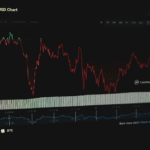Investing in digital assets can be a rollercoaster ride, with prices swinging wildly in short periods. This volatility can be intimidating for newcomers, but understanding its causes and how to navigate it can lead to more successful investments.
Causes of Volatility
One of the primary reasons for volatility in digital assets is their relatively young and speculative nature. Unlike traditional assets like stocks or bonds, digital assets lack regulation and are heavily influenced by market sentiment. News events, regulatory changes, and technological developments can all trigger rapid price fluctuations.
Additionally, the lack of intrinsic value in many digital assets means their prices are driven solely by supply and demand dynamics. This can lead to exaggerated price movements as investors rush in or out of the market based on speculation or fear.
Mitigating Volatility
Despite the inherent volatility, there are strategies investors can employ to mitigate risk:
- Diversification: Spreading investments across different digital assets can help reduce the impact of volatility on your overall portfolio. This way, gains in some assets may offset losses in others.
- Risk Management: Setting clear entry and exit points, as well as implementing stop-loss orders, can help protect investments from significant losses during periods of volatility. It’s essential to have a predetermined strategy and stick to it rather than reacting emotionally to market fluctuations.
By understanding the common causes of volatility and implementing risk management strategies like diversification and setting clear exit points, investors can better position themselves to weather market fluctuations and achieve their investment goals.
For personalized digital asset advisory services and assistance in navigating the world of digital asset investments, consider reaching out to Kenson Investments.
Feel free to get in touch with us today!
Disclaimer: The content provided on this blog is for informational purposes only and should not be construed as financial advice. The information presented herein is based on personal opinions and experiences, and it may not be suitable for your individual financial situation. We strongly recommend consulting with a qualified financial advisor or professional before making any financial decisions. Any actions you take based on the information from this blog are at your own risk.














